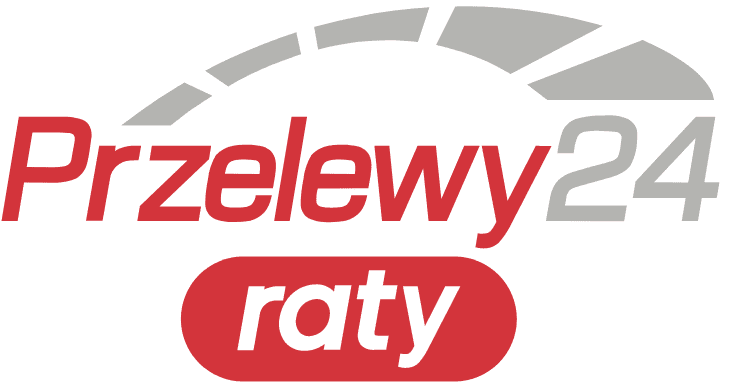| General information on project loading |
Introduction
To set up the automation system, you need to load the generated offline project data onto the connected devices. This project data is generated, for example, when configuring hardware, networks and connections or when programming a user programme or when creating recipes.
During the first download, the entire project data is downloaded. During subsequent loading operations, only the changes are downloaded.
You can download project data to devices and memory cards.
| Note Starting with TIA Portal V15 and the S7-1500 processor from software V2.5 onwards, the markup tables are included when downloading to the device or memory card and when downloading from the device or memory card. This ensures that the tag tables will also be available online on your processor. PLC tags are stored according to the tag tables configured offline. The device can perform an online/offline comparison and download the tag tables. |
| Note During the compilation of the device, no additional download process can be started. Please note that the compilation process can not only be performed manually, but can also be started automatically for control and monitoring devices. |
Possible download options
Depending on the object you want to retrieve, you have the following options:
-
Hardware and software (changes only)
Both the hardware configuration and the software are downloaded to the destination if there are differences between the online and offline versions.
-
Equipment configuration
Only the hardware configuration is downloaded to the destination.
-
Software (changes only)
Only those objects that differ online and offline are downloaded to the destination.
-
Software (all)
The PLC program containing all blocks, PLC data types and PLC tags is loaded into the target device and all values are reset to the initial values. Note that this also applies to retention values.
You can also transfer project data already on the device back to your project. You have the following options:
-
Upload the entire device as a new station
The hardware configuration of the device and the software on the device are loaded in the project.
All relevant device data is sent to the project.
-
Upload device software
Only blocks and parameters from the device are sent to the existing processor in the project.
In both cases, when loading, all instances of the library types are re-linked to the correct version of the type in the project library. If the correct type is not yet available for the loaded instance or the correct version of the type does not exist in the project library, the type or version will be added to the project library.
Synchronised download
In team engineering, it is possible for several users to work on one project with several engineering systems at the same time and access one S7-1500 processor. To ensure consistency within a shared project, it is necessary to synchronise changed data before loading so that nothing is accidentally overwritten.
If differences are detected between online and offline data management in a joint project due to a different engineering system, automatic synchronisation of the loaded data is offered during loading.
In this case, the 'Synchronisation' dialog box displays the data to be synchronised with the current status (online-offline comparison) and possible actions.
| Use case |
Recommendations |
Synchronisation |
| One or more blocks in the processor (online) are newer than in the engineering system (offline). | These blocks need to be transferred from the processor to the engineering system before downloading. | Automatic synchronisation is possible: The blocks in the engineering system are updated before loading. |
| One or more new blocks have been created that only exist on the processor (online). | These blocks need to be transferred from the processor to the engineering system before downloading. | Automatic synchronisation is possible: New blocks are added to the engineering system before downloading. |
| One or more blocks in the processor have been removed. | Blocks must also be removed before downloading into the engineering system. | Automatic synchronisation is not possible. Blocks deleted on the CPU must be removed manually in the offline project in the engineering system. |
| One or more blocks in the processor and in the engineering system are different. This happens when another user has changed the blocks where you have also made corrections and uploaded them to the CPU already. |
These blocks with competing changes must be adjusted manually. In this case, you decide which changes you accept. If blocks on the CPU are to be retained, they must be taken over from the CPU in the engineering system before being downloaded to the CPU. If changed blocks are to be applied, you can continue the download without synchronisation. |
Automatic synchronisation is not possible: The affected blocks in the processor or in the engineering system must be adjusted manually. One of the existing versions of the block (online or offline) will be overwritten in the process. |
| There are differences in the hardware configuration of the processor (online) and the engineering system (offline). | Differences in hardware configuration must be adjusted manually. In this case, you decide which hardware configuration you accept. If the existing processor hardware configuration is to be retained, it should be applied to your engineering system before downloading. If you want to use the changed hardware configuration, you can continue downloading without synchronisation. |
Automatic synchronisation is not possible: The hardware configuration must be adjusted manually. One of the existing hardware configurations (online or offline) will be overwritten. |
If necessary, you can use the 'Force download to device' command to download blocks without synchronisation.

| Downloading project data to the device |
The following section describes the general procedure for downloading project data to the device. Detailed information on how to download specific objects and any special considerations can be found in the product's online help.
Requirement
- The project data is consistent.
- Any device you wish to download to is available via online access.
Procedure
To download project data to the selected devices, follow these steps:
|
|||||
Result
Selected project data was downloaded to the devices.

| Downloading project data to the memory card |
You have the option of loading project data onto a memory card. In the case of the S7-300/400 series processors, you can also directly download the user programme to a memory card inserted in the processor.
To download project data to a memory card, you have the following options:
- Transferring project data to the memory card
- Saving project data to a memory card
- Downloading the user program to the memory card inserted in the S7-300/400 series processor
Requirement
The memory card is displayed.
Downloading project data to the memory card
To download project data to the memory card, follow these steps:
|
Or:
|
Or:
|
Downloading the user programme to the memory card on the CPU (S7-300/400 only)
To download the user programme to the memory card on the S7-300/400 series processor, follow the steps below:
|

| Project data transfer from the device |
The following section describes the general procedure for transferring project data from a device. Which project data can be transferred from the device depends on the installed products.
You have the following options for transferring project data from the device to your project:
-
Transmission as a new station
With this option, you can transfer existing device project data to your project as a new station.
-
Transmission of device design data
With this option, you upload project data from the device to an existing processor in the project. You can find the project data that can be uploaded in the product's online help.
In both cases, all instances of the library types are reconnected to the correct version of the type in the project library during the upload. If the correct type is not yet available for the uploaded instance or the correct version of the type does not exist in the project library, the type or version will be added to the project library. Library types in the "in test" state that are stored on the device can be uploaded to the project if a shared version of the type on which the test version is based is available in the project library.
Requirement
- The project is open.
- The hardware configuration and software to be uploaded must be compatible with the TIA Portal. If the data on the device has been created with a previous version of the software or other configuration software, please check that they are compatible.
Transmission as a new station
To upload the entire device to your project, follow these steps:
|
Transmission of device design data
To transfer only project data from one device to a project, follow these steps:
|
Loading project data from another project version from the device
After executing the commands "Upload from device (software)" and "Upload device as new station (hardware and software)" in the "Online" menu, it is checked whether the project data on the device has been created in a version other than the open version of TIA Portal.
If the project data was created using a different version of the project, the "Upload preview" dialog box will indicate whether all upload requirements have been met.
Make a note of the loading requirements and, if necessary, select the command in the selection menu in the 'Action' column.
The 'Upload from device' button is active as soon as the view has been updated and uploading is possible.
Special functions when using data blocks from other product versions
Data blocks created in another version of the TIA Portal product cannot be opened and edited in the current product version.

| Loading project data from a memory card |
You have the following options for transferring project data from the memory card to your project:
-
Upload project data from a memory card as a new station
With this option, you can transfer project data from the memory card to your project as a new station.
-
Transfer project data from a memory card to an existing device
With this option, you can upload project data from a memory card to an existing device in your project. You can find the project data that can be uploaded in the online help of the product.
In both cases, all instances of the library types are re-linked to the correct version of the type in the project library during loading. If the correct type is not yet available for the loaded instance or the correct version of the type does not exist in the project library, the type or version will be added to the project library.
Requirement
- The project is open.
- The memory card is displayed.
- The hardware configuration and software to be uploaded must be compatible with the TIA Portal. If the data on the memory card was created with a previous version of the software or other configuration software, please check that they are compatible.
Transmission of project data as a new station
To transfer project data from a memory card to a project, follow these steps:
|
Or:
|
Or:
|
Transferring project data to an existing device
To transfer project data from a memory card to an existing device, follow these steps:
|




